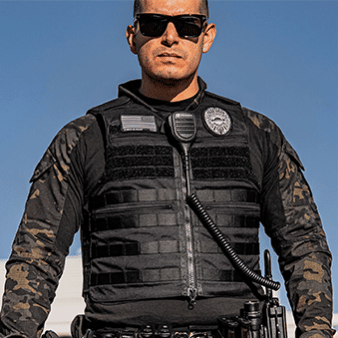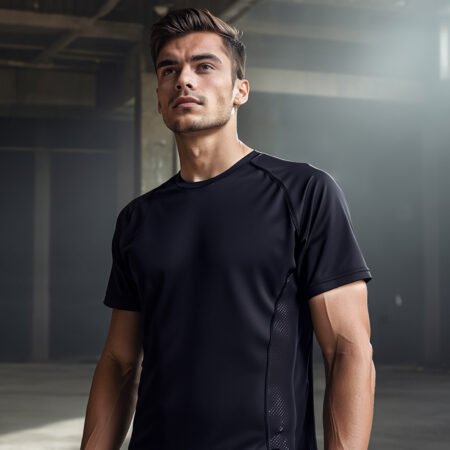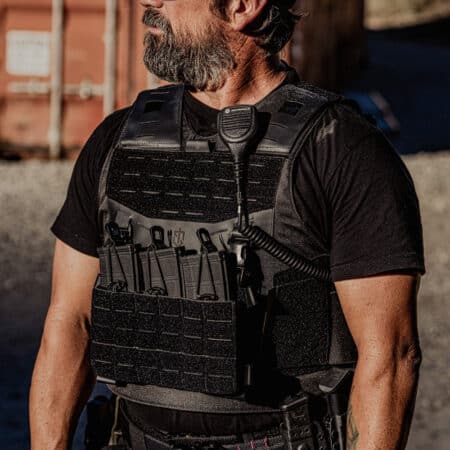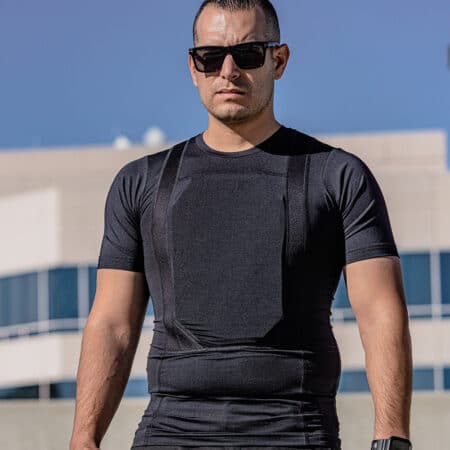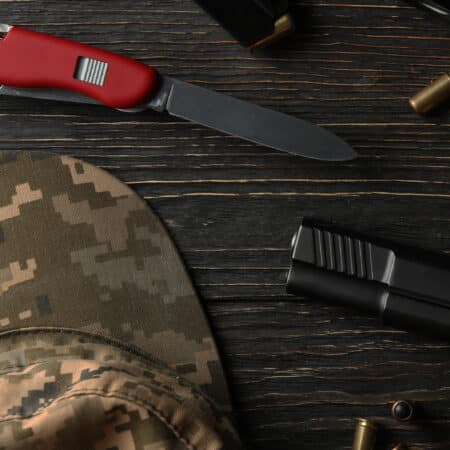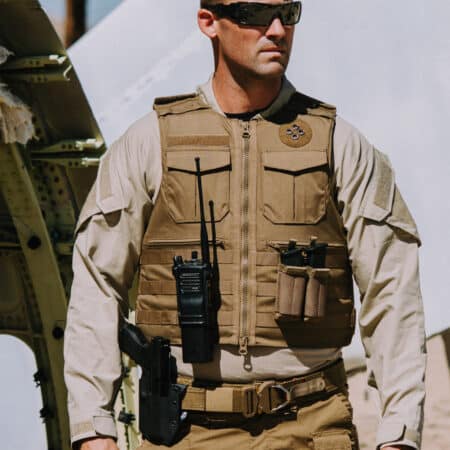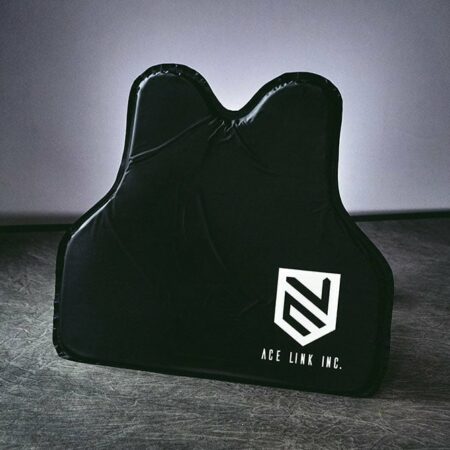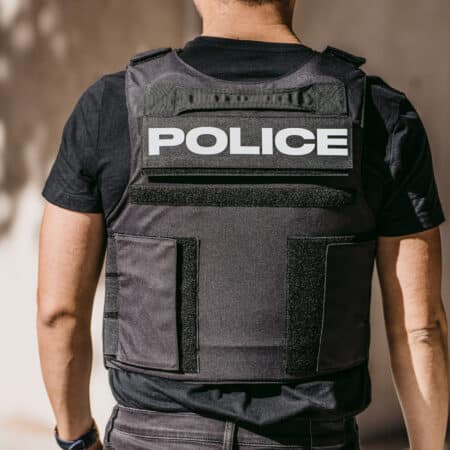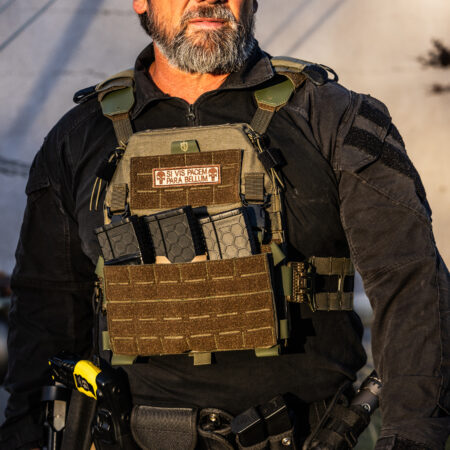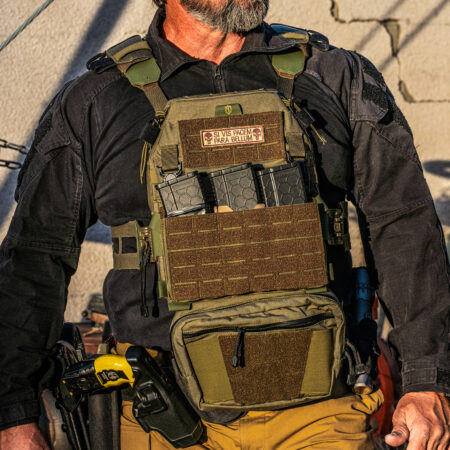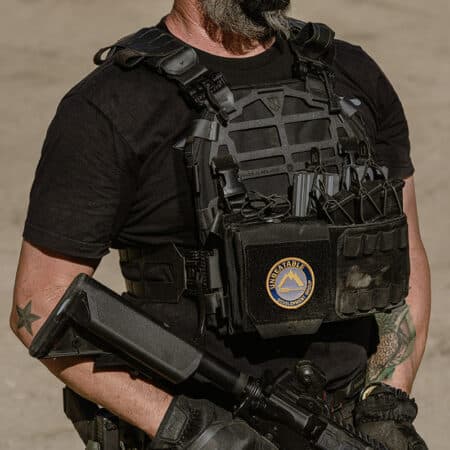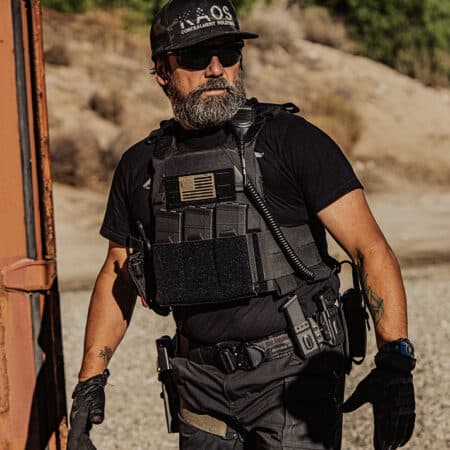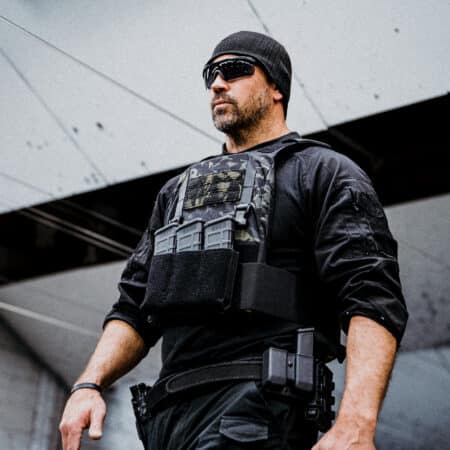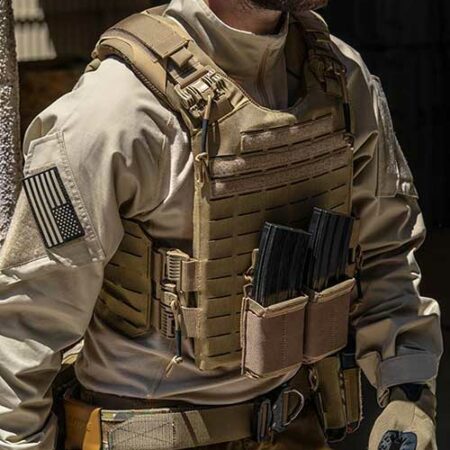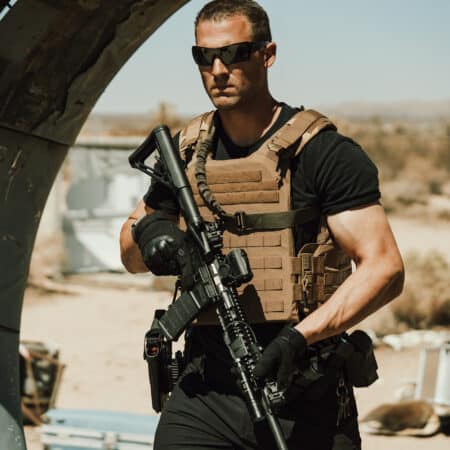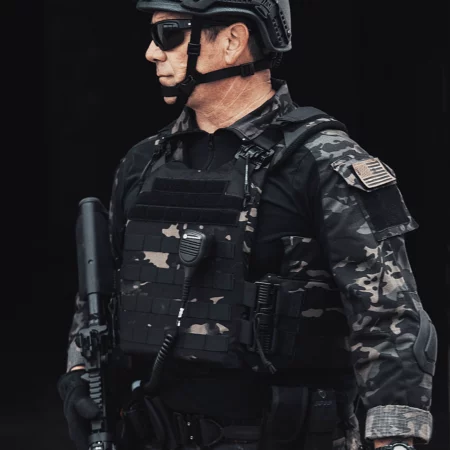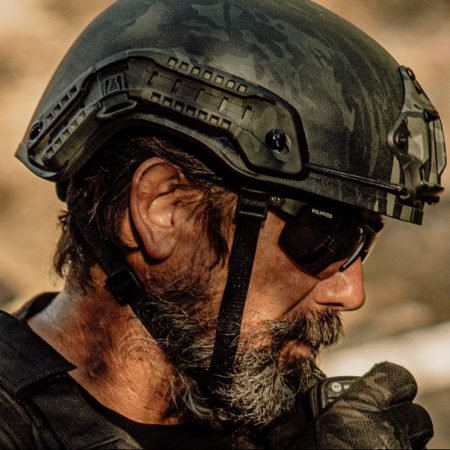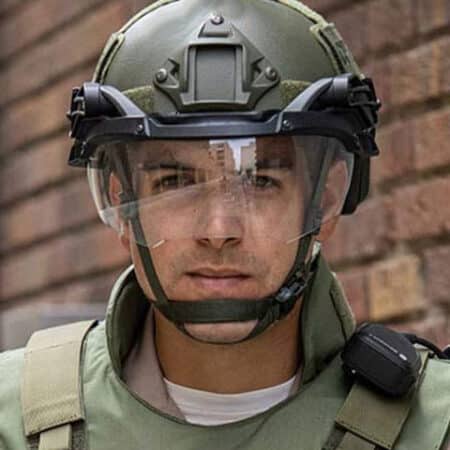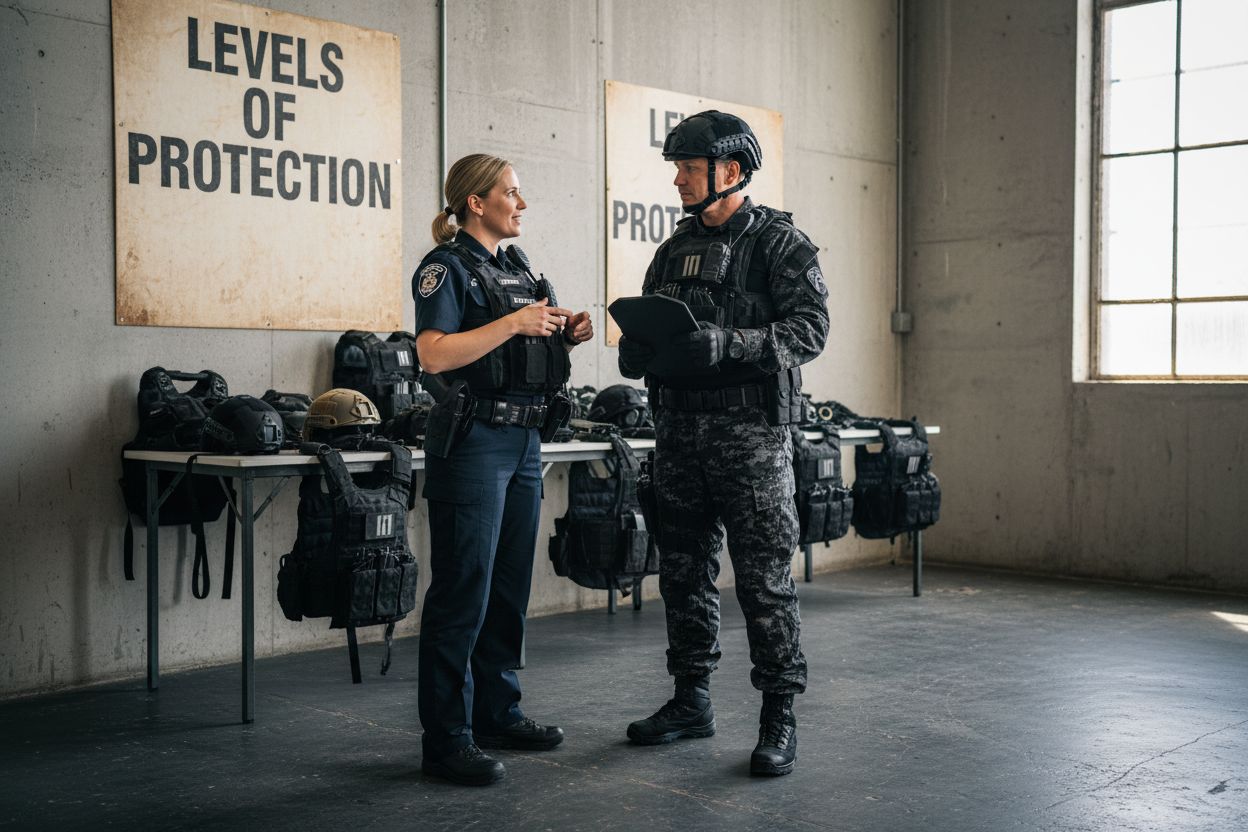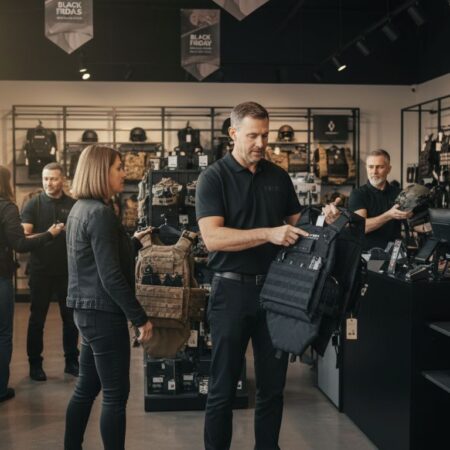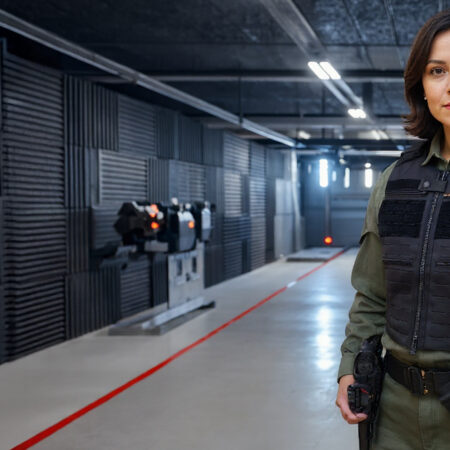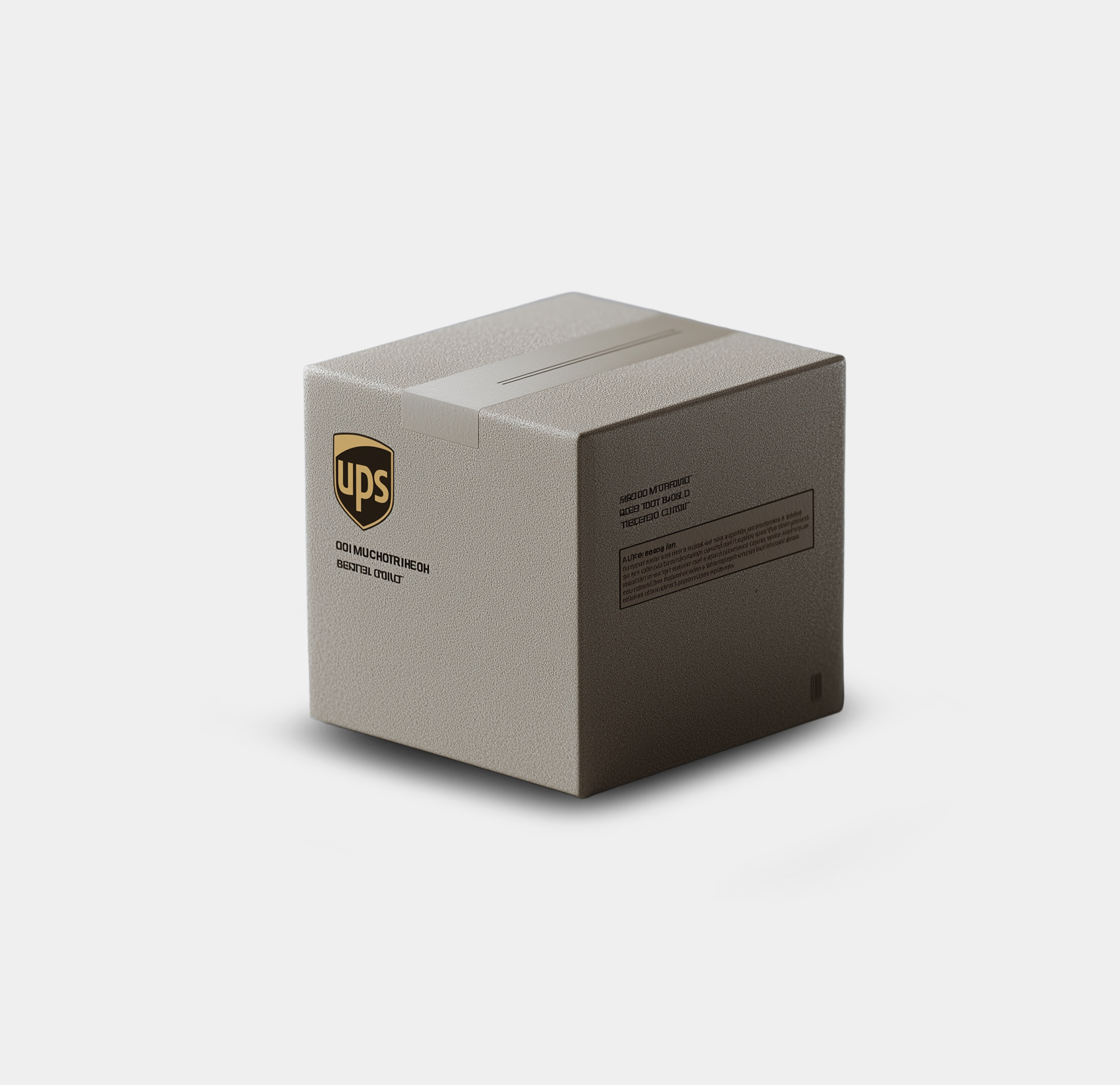- Table of Contents
- Quick Summary
- Defining NIJ.07 Levels of Protection: A Basis for Armor
- Why NIJ.07 Matters: Ensuring Safety and Compliance
- How NIJ.07 Classification Works: Understanding the Ratings
- Key Concepts of NIJ.07: Types of Threats and Armor Types
- Take the Guesswork Out of Protection: Choose NIJ.07 Certified Gear That Stands Up to Real-World Threats
- Frequently Asked Questions
- Recommended
Choosing the right body armor could literally save your life, but not all protective gear is created equal. Most people think a bulletproof vest either works or it does not and that is it. The truth is the NIJ.07 standard breaks protection down into five distinct levels, each rigorously tested to withstand specific ballistic threats you might never expect.
Table of Contents
- Defining Nij.07 Levels Of Protection: A Basis For Armor
- Why Nij.07 Matters: Ensuring Safety And Compliance
- How Nij.07 Classification Works: Understanding The Ratings
- Key Concepts Of Nij.07: Types Of Threats And Armor Types
Quick Summary
| Takeaway | Explanation |
|---|---|
| NIJ.07 sets rigorous armor protection standards | It provides a framework for evaluating and certifying the ballistic resistance of body armor. |
| Armor levels range from HG1 to RF3 | Each level indicates specific protection against different ammunition types, with higher levels offering more robust defense. |
| Certification involves extensive testing | Body armor is subjected to controlled ballistic impacts, ensuring it meets critical performance metrics for safety and reliability. |
| Legal compliance is essential for professionals | NIJ.07 certification is often mandatory for law enforcement and military personnel, ensuring equipment meets minimum protective standards. |
| Select armor based on threat assessment | Understanding specific operational threats aids in choosing the right armor, maximizing safety in high-risk environments. |
Defining NIJ.07 Levels of Protection: A Basis for Armor
Body armor protection standards are critical for ensuring personal safety across high-risk professions and personal defense scenarios. The National Institute of Justice (NIJ) has developed a comprehensive framework known as NIJ.07 to systematically evaluate and certify the ballistic resistance of protective gear. NIJ testing protocols provide a standardized methodology that allows manufacturers and users to understand precise protection capabilities.
Understanding Protection Classifications
The NIJ.07 standard categorizes body armor into distinct protection levels based on the ammunition types and velocities a specific piece of gear can withstand. These levels range from Level Hand Gun 1 through Rifle 3, with each level representing increasingly robust protection capabilities. The classifications are determined through rigorous scientific testing that simulates real-world ballistic threats.

Key characteristics of NIJ.07 protection levels include:
- Systematic evaluation of armor materials and construction
- Precise measurement of kinetic energy absorption
- Consistent testing protocols across different armor designs
- Comprehensive assessment of potential ballistic impacts
Performance and Verification Processes
To achieve certification, body armor undergoes extensive laboratory testing where sample panels are subjected to controlled ballistic impacts. These tests evaluate critical performance metrics such as:
- Penetration resistance
- Back face signature (deformation)
- Multiple shot capabilities
- Material integrity under repeated stress
Armorers and manufacturers rely on these standardized NIJ protocols to ensure their products meet stringent safety requirements. For professionals in law enforcement, military, and security sectors, these certifications represent a crucial benchmark of equipment reliability.
By establishing clear, scientifically validated protection standards, the NIJ.07 framework provides essential guidance for both manufacturers and end-users seeking comprehensive personal protection solutions. Learn more about our NIJ Rated Level IV Armor Plates to understand how these standards translate into real-world protective gear.
Why NIJ.07 Matters: Ensuring Safety and Compliance
The NIJ.07 standard is more than a technical specification it represents a critical lifeline for professionals operating in high-risk environments. By establishing rigorous performance benchmarks, this framework transforms body armor from a passive protective layer into a scientifically validated safety system that can mean the difference between life and death.
Legal and Professional Accountability
For law enforcement, military, and security professionals, NIJ.07 certification is not just recommended it is often a mandatory requirement. These standards provide a legal and professional benchmark that ensures equipment meets minimum protective capabilities. Research from the International Association of Chiefs of Police indicates that departments requiring NIJ-certified armor significantly reduce line-of-duty injuries and fatalities.
Key accountability factors include:
- Clear performance documentation
- Standardized testing protocols
- Transparent equipment evaluation
- Verifiable protection levels
- Legal compliance for professional use
Risk Mitigation and Equipment Selection
NIJ.07 standards offer critical guidance for equipment selection by providing a comprehensive framework for understanding protection capabilities. Organizations and individuals can make informed decisions based on scientifically validated metrics, matching armor precisely to potential threat environments.
Professionals must consider:
- Specific operational threat levels
- Environmental working conditions
- Movement and comfort requirements
- Budget constraints
- Long-term durability
These standards ultimately transform body armor from a generic protective item into a tailored safety solution. Explore our essential body armor buying tips to understand how NIJ.07 classifications inform smart purchasing decisions.
By providing a universal language of protection, NIJ.07 empowers users to select equipment with confidence, knowing their gear has been rigorously tested and validated against real-world ballistic threats.
How NIJ.07 Classification Works: Understanding the Ratings
The NIJ.07 classification system represents a sophisticated approach to quantifying ballistic protection, transforming complex scientific testing into clear, actionable protection levels. Unlike generic safety ratings, this framework provides a nuanced understanding of armor performance under specific threat scenarios.
Ballistic Performance Testing Methodology
Detailed scientific protocols form the foundation of NIJ.07 ratings. Each armor level undergoes rigorous laboratory testing where sample panels are subjected to controlled ballistic impacts using standardized ammunition types and velocities. The testing process evaluates not just penetration resistance, but also the armor’s ability to absorb and dissipate kinetic energy.
Critical testing parameters include:
- Precise velocity measurements
- Multiple impact assessments
- Back face signature evaluation
- Material deformation analysis
- Energy transfer calculations
Protection Level Breakdown
NIJ.07 classifies body armor into distinct levels based on their demonstrated capabilities against specific ammunition types. Each level represents a progressively higher standard of protection:
Below is a comparison of the NIJ.07 protection levels, detailing the types of ammunition each level defends against and the general description of their intended use.

Here are all NIJ 0101.07 / 0123.00 protection levels (the NIJ “.07” system) with the exact test projectiles and reference velocities as specified in NIJ Standard 0123.00:
-
NIJ HG1 — Handgun test threats:
• 9×19 mm Luger FMJ RN, 124 gr — 1305 ft/s (398 m/s).
• .357 Magnum JSP, 158 gr — 1430 ft/s (436 m/s). Office of Justice Programs (roughly corresponds to older Level IIA/II in common usage) -
NIJ HG2 — Handgun test threats (higher-energy handgun threats):
• 9×19 mm Luger FMJ RN, 124 gr — 1470 ft/s (448 m/s).
• .44 Magnum JHP, 240 gr — 1430 ft/s (436 m/s). Office of Justice Programs (roughly corresponds to older Level IIIA) -
NIJ RF1 — Rifle test threats:
• 7.62×51 mm M80 Ball (NATO FMJ), 147 gr — 2780 ft/s (847 m/s).
• 7.62×39 mm MSC (Type 56, Factory 31) ball — 2400 ft/s (732 m/s).
• 5.56 mm M193, 56 gr — 3250 ft/s (990 m/s). Office of Justice Programs (replaces much of old Level III threats) -
NIJ RF2 — RF1 threats plus an additional higher-velocity rifle threat:
• 7.62×51 mm M80 Ball, 147 gr — 2780 ft/s (847 m/s).
• 7.62×39 mm MSC (Type 56) — 2400 ft/s (732 m/s).
• 5.56 mm M193 — 3250 ft/s (990 m/s).
• 5.56 mm M855, 61.8 ±1.5 gr — 3115 ft/s (950 m/s). Office of Justice Programs (new intermediate rifle level — sits between old III and IV) -
NIJ RF3 — Highest rifle/armor-piercing test threat:
• .30-06 M2 AP (armor-piercing), 165.7 gr — 2880 ft/s (878 m/s). Office of Justice Programs (equivalent to old Level IV AP test)
Source / authoritative reference: NIJ Standard 0123.00 (tables of HG and RF test threats & reference velocities) as published by the National Institute of Justice. Office of Justice Programs
Verification and Ongoing Compliance
Certification is not a one time event. Manufacturers must continuously demonstrate compliance through periodic retesting and quality control processes. Explore our Level 3A soft armor panel options to see how these rigorous standards translate into real world protective gear.
By establishing these comprehensive rating protocols, NIJ.07 ensures that body armor is not just a product, but a scientifically validated safety system designed to protect lives in high risk environments.
Key Concepts of NIJ.07: Types of Threats and Armor Types
Understanding the intricate relationship between ballistic threats and protective gear is fundamental to comprehending NIJ.07 standards. This framework goes beyond simple categorization, offering a sophisticated approach to matching armor capabilities with potential real-world danger scenarios.
Threat Classification and Impact Dynamics
Research from ballistic experts reveals that NIJ.07 identifies threats based on multiple critical parameters. Ammunition type, velocity, mass, and kinetic energy are meticulously evaluated to determine precise protection requirements. These threat classifications are not static but represent a dynamic understanding of potential ballistic risks.
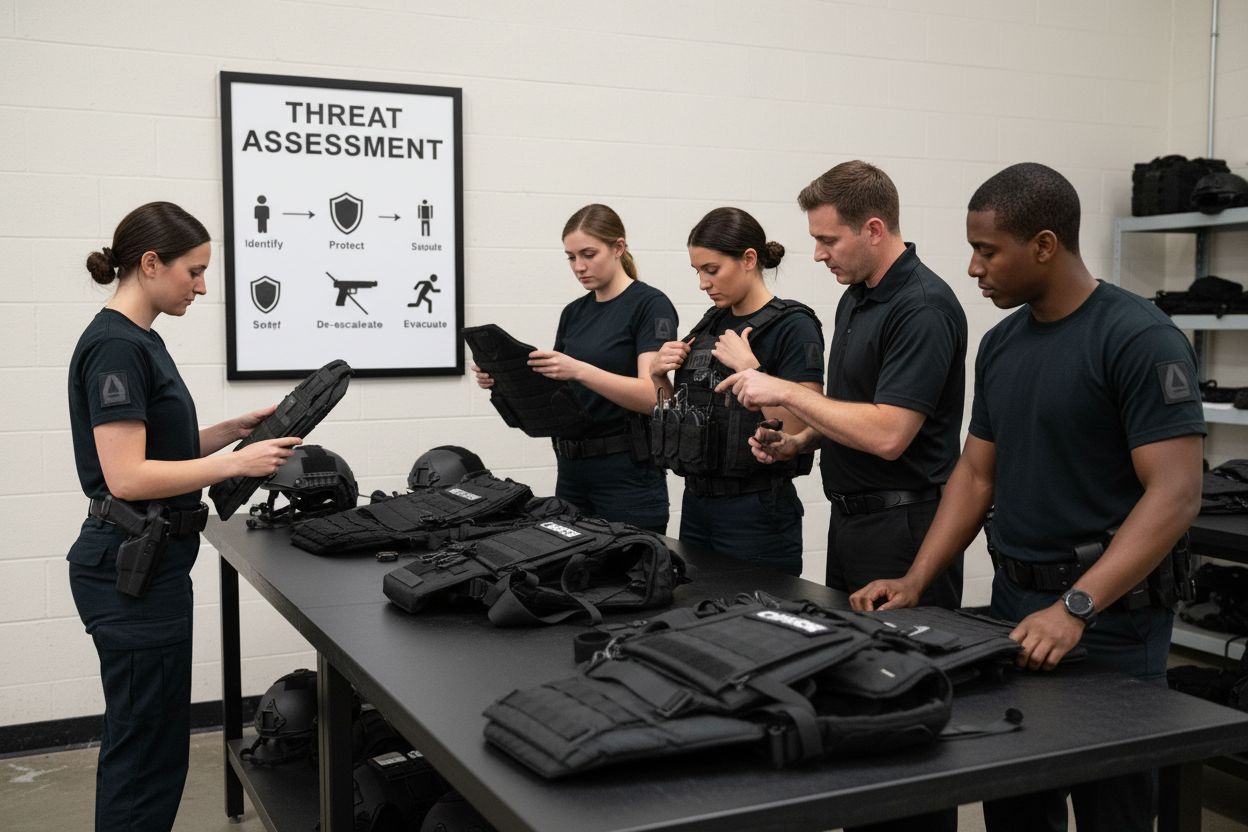
Key threat assessment factors include:
- Projectile composition
- Velocity range
- Kinetic energy transfer
- Material penetration potential
- Ammunition design characteristics
Armor Material and Construction Types
NIJ.07 recognizes multiple armor types, each designed to address specific threat environments. These range from soft armor panels to rigid ceramic and composite plates, with each material offering unique protective characteristics:
This table outlines distinction between the most common types of body armor materials and construction recognized under NIJ.07 standards, highlighting their features and typical applications.
| Armor Type | Material/Construction | Key Features | Typical Application |
|---|---|---|---|
| Soft Armor | Flexible aramid fibers (Kevlar) | Lightweight, concealable, flexible | Everyday law enforcement, concealed carry |
| Hard Armor | Rigid ceramic or polyethylene plates | High-caliber resistance, heavier, bulkier | Military, SWAT, rifle defense |
| Composite Armor | Hybrid (layered materials) | Mix of flexibility and strength, specialized | Advanced tactical situations |
| Special Purpose | Custom or scenario-specific designs | Tailored to environmental/operational needs | Unique threats, specialty forces |
- Soft Armor: Flexible materials like Kevlar, ideal for concealable protection
- Hard Armor Plates: Rigid ceramic or polyethylene designs for high-caliber threat resistance
- Composite Armor: Hybrid materials combining multiple protective technologies
- Special Purpose Armor: Designed for specific environmental or operational challenges
Practical Threat Mitigation Strategies
Effective armor selection requires understanding the complex interplay between threat types and protective capabilities. Learn more about our innovative soft rifle plate technologies that demonstrate how advanced materials can provide unprecedented protection.
By providing a comprehensive framework for threat assessment and armor design, NIJ.07 empowers professionals to make informed protection decisions that can mean the difference between vulnerability and safety.
Take the Guesswork Out of Protection: Choose NIJ.07 Certified Gear That Stands Up to Real-World Threats
Reading about NIJ.07 protection levels makes one thing clear. The stakes could not be higher when it comes to selecting gear that truly performs under fire. The challenge is clear: you want confidence that your armor meets the highest standards of ballistic resistance and legal compliance so you never have to question your safety on the job or in unpredictable situations. Whether you face uncertain threat environments at work or want peace of mind for personal security you deserve reliable armor that is tested, certified, and trusted to perform as promised.

At AcelinkArmor.com, we go beyond the basics. Our lineup features products that proudly display their NIJ Rated Level IV Armor Plates and advanced soft armor solutions. You can browse innovative soft rifle plate options built for comfort and ultimate protection. Make your next move count and select your armor from a catalog that places your safety first. Ready to choose life-saving protection without compromise? Visit AcelinkArmor.com today to shop NIJ.07 certified tactical and personal armor that meets the demands of real-world defense.
Frequently Asked Questions
How does the NIJ.07 certification process work for body armor?
Body armor undergoes extensive laboratory testing where sample panels are subjected to controlled ballistic impacts to evaluate critical performance metrics such as penetration resistance and back face signature.
Why is NIJ.07 certification important for professionals in law enforcement and military?
NIJ.07 certification is vital for ensuring that body armor meets minimum protective capabilities, reducing line-of-duty injuries and fatalities, and providing legal and professional accountability for equipment used in high-risk environments.
Recommended
- NIJ Rated Level IV Armor Plates – Ace Link Armor
- NIJ.06 Level 4 Hard Armor Plates – Ace Link Armor
- Backpack Armor 11×17″ Level 3A – Ace Link Armor
- Backpack Armor 10×18″ Level 3A – Ace Link Armor
- What is Flame Resistant Clothing? Understanding Its Importance – WorkWearComfort


